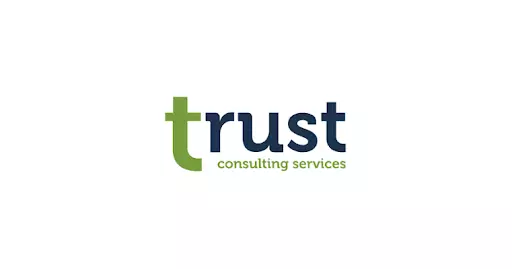News
Top 10 Strategies for Program Management Success

Project management involves planning, organizing, and supervising a project to achieve a specific goal. This involves setting clear objectives, figuring out how to achieve them, and efficiently using resources like time, money, and people.
Program management isn’t about tackling one project at a time. It’s about herding related projects together and ensuring they all work towards one big goal for your company.
Effective program management can improve efficiency, innovative solutions, and organizational agility. It allows leaders to make informed decisions considering multiple projects’ collective impact, ultimately driving significant value and sustaining competitive advantage.
What is Program Management?

Program management is responsible for multiple related projects that either improve an organization’s functioning or aim to fulfill some strategic goals. Unlike program management, which works on completing a specific task, program management manages all the projects whose completion has been interrelated.
The PMI estimates that by 2027, about 88 million people will already be qualified for job roles related to projects. As the world market environment becomes increasingly globalized, digitalized, unpredictable, and fast. Organizations must tolerate and respond promptly to bring services and products to the market.
The main goal is to optimize the program’s benefits, which may not be possible if the projects are managed separately. This approach helps organizations handle complex initiatives more efficiently, ensuring that changes and improvements are implemented in a coordinated way that maximizes value creation.
Importance of Accurate and Reliable Financial Statements
What Does a Program Manager Do?

Program management encompasses monitoring related projects, providing a mentorship framework, and collectively steering them toward organizational objectives from inception to conclusion. Program managers’ responsibilities are more than just project management, which is a narrow area of expertise.
First, a program manager has to correlate the program’s objectives with the organization’s strategic direction. This is done by pinpointing how single program tasks can cumulatively move projects towards these macro-objectives. A program’s executive director directs the program and ensures that every project parallels the program’s vision.
The budget control of an Enterprise-wide program, consisting of multiple projects, is a core task of a program manager. They should maintain budgetary limits even as their resources are utilized in a way that synchronizes with the strategic objectives of the overlying projects.
When the program gets closer to completion, the program manager does their best to ensure all program components are adequately completed. This includes checking if the set goals are achieved and carrying out the final evaluation to see what works and what should be changed for better performance in the future.
10 Best Strategies to Manage a Project Effectively

The strategic implementation of the management program must be sensitive and inclusive of the whole organization in its alignment with the broader organizational goals. This is the most critical part of the project because it creates a common direction for all of the components and the reason for the investment of funds.
This alignment is crucial because it ensures that each project within the program is successful on its terms and contributes effectively to the larger goals, thereby maximizing the organization’s return on investment.
Strategic alignment within program management is about seeing the bigger picture and ensuring every project contributes to this vision. This holistic approach justifies the resources allocated and helps achieve a cohesive and impactful realization of the organization’s long-term goals. It transforms a collection of individual projects into a unified, strategic initiative that moves the organization forward deliberately and effectively.
Let’s explore the best strategies to manage the project effectively:
1. Setting Clear Objectives
Success starts with clarity. Implement concrete and precise goals and objectives for the program that directly support the organization’s strategic objectives. These objectives should be SMART: Specific, Measurable, Achievable, Relevant, and Time-bound. Precisely formulated goals serve as a roadmap for all team members and stakeholders and thus help simplify evaluation and attainment of the desired outcomes.
2. Stakeholder Engagement

Engaging stakeholders effectively is critical. This means regularly communicating with everyone interested in or affected by the program—from senior management to project team members, from customers to suppliers. Understanding their expectations, addressing their concerns, and incorporating feedback ensures broader support and can provide valuable insights that enhance program outcomes.
3. Skilled Team

Assembling the right team is fundamental. Every member of the team should be equipped with specific capabilities and talents for the execution of the projects earmarked for the program. It is also crucial to specify the roles and ensure the team members know what is expected of them. This clarity helps reduce conflicts and enhance collaboration, efficiently driving the program toward its objectives.
4. Resource Allocation
Optimal resource allocation is non-negotiable. This involves budgeting financial resources wisely and allocating human resources and time effectively. Ensuring that each project within the program has the necessary resources when needed prevents bottlenecks and delays, contributing to a smoother execution.
5. Risk Management

Anticipating and mitigating risks is crucial. Begin with a comprehensive risk assessment to identify potential issues derailing the program. Develop strategies for mitigating these risks and establish a monitoring process to manage them throughout the program’s lifecycle. Adjustments should be made as new risks emerge and situations evolve.
6. Communication Plan

Crafting a detailed communication plan is vital to keeping all parties informed. These tactics should focus on how information will be transmitted, how often updates will be given, and what tools will be used. Good communication prevents misinterpretations, so team members are on the same page regarding changes and overall development.
7. Performance Monitoring

Keeping a close eye on performance involves setting up systems to track the progress of projects within the program against the established objectives. Utilize KPIs and regular status updates to assess performance. This helps ensure the program stays on track and makes data-driven decisions to guide future actions.
8. Governance Structure

A robust governance structure establishes clear lines of authority and decision-making processes. It should clearly define who has the power to make decisions and how those decisions impact the program. This structure helps maintain consistency, ensure accountability, and resolve issues swiftly, thereby supporting the program’s integrity.
9. Flexibility and Adaptability

The ability to adapt to changes is vital. Programs must remain flexible and adjust strategies and plans in response to internal project dynamics or external environmental shifts. This adaptability can determine a program’s success or failure, particularly in rapidly changing industries.
10. Review and Learn

Finally, a continuous learning approach is indispensable. Regularly review the entire program to evaluate what’s working and what’s not. This thorough analysis should lead to actionable insights, helping refine processes and strategies for current and future programs. Learning from each phase and feedback help evolve program management practices, leading to better efficiency and effectiveness.
Final Thoughts
Efficient program management is critical for any organization planning to implement a strategic goal or conduct several coordinated projects simultaneously. To achieve this, attention to top strategies, including but not limited to setting clear goals, engaging stakeholders, proper resource utilization, and robust communication, will help organizations better manage complex initiatives.
By practicing each strategy, we can get each program project to achieve its assigned goal while positively building the organizational objective.
Strategic alignment, rigorous planning, and continuous learning cannot be overstated. These elements are essential for navigating the complexities of modern business environments and driving innovation and efficiency across projects.
Choose Trust Consulting for program management success, and let us help you transform your projects into strategic assets that deliver sustainable competitive advantage. Join us in redefining what’s possible and propel your business toward future-ready growth.
get the best consultation
Please complete the form below so we can direct your inquiry to the right expert.
Latest News
Transform Your Workplace with Superior Facility Services
News Transform Your Workplace with...
Read MoreImprove Your Approach: Effective Management Solutions
News Improve Your Approach: Effective...
Read More

